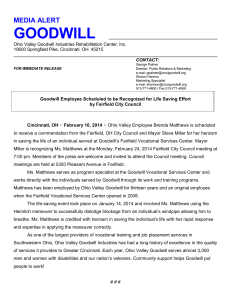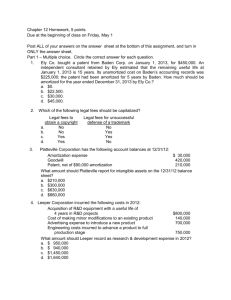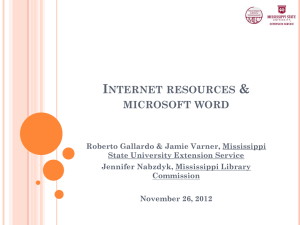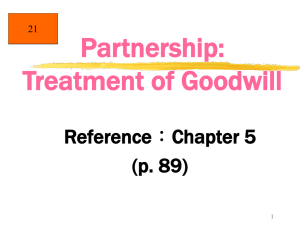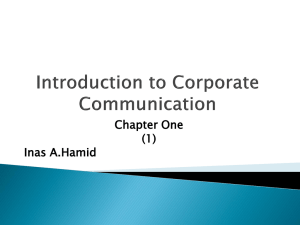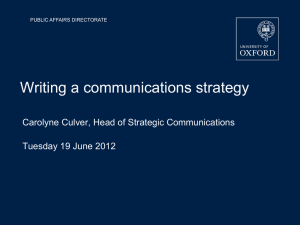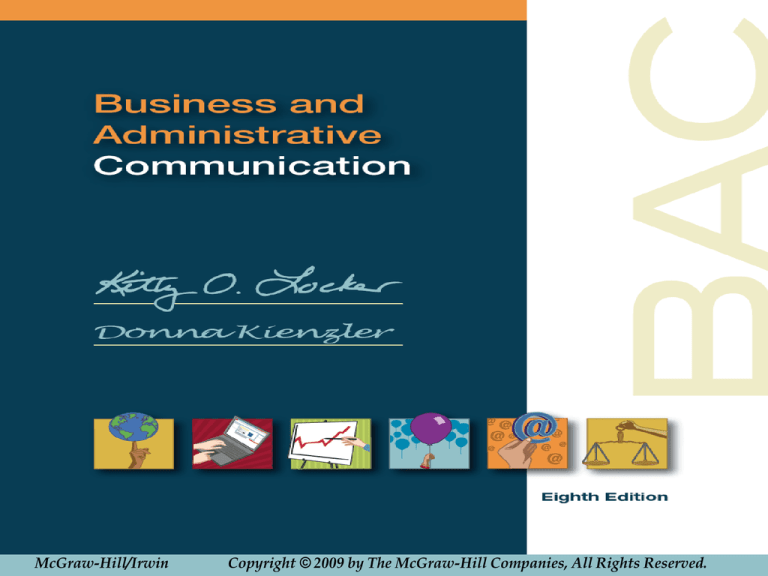
McGraw-Hill/Irwin
McGraw-Hill/Irwin
©2009 The
McGraw-HillAll
Companies,
All Rights Reserved
Copyright © 2009 by The McGraw-Hill
Companies,
Rights Reserved.
Chapter 1
Business Communication,
Management & Success
Types
Reasons/Purposes
Audiences
Benefits & Costs
Criteria
Goodwill
Trends
Conventions
Analysis
Problem Solving
1-2
Types of Communication
Verbal
Face-to-face
Phone
conversations
Informal meetings
Presentations
E-mail messages
Letters
Nonverbal
Computer graphics
Company logos
Smiles
Size of an office
Location of people
at meetings
1-3
Reasons Managers Communicate
To convey information
To aid decision-making
To create records
To motivate employees
To save money
To send effective messages
1-4
Communication Purposes
All business communication has three
basic purposes
To inform (explain)
To request or persuade (urge action)
To build goodwill (make good image)
Most messages have more than one
purpose
1-5
Audiences
Internal
Go to people inside organization
Memo to subordinates, superiors, peers
External
Go to people outside organization
Letter to customers, suppliers, others
1-6
Internal Audiences of Sales
Manager – West
President
To superiors
VP
Production
To peers
VP
Marketing
Sales
manager
East
To subordinates
Sales rep
VP Sales
VP Finance
VP Human
Resources
Sales
manager
Midwest
Sales
manager
West
Sales
manager
Int’l.
District 1
manager
District 2
manager
District 3
manager
Sales rep
Sales rep
Sales rep
Sales rep
1-7
Organization’s External Audiences
Subsidiaries
Customers
Clients
Stockholders
Investors
Lenders
Employment
agencies
General public
Potential
employees,
stockholders,
customers
Special interest
groups
Unions
Professional services
Suppliers
Distributors
Wholesalers
Franchisees
Retailers
Agents
Organization
Legislators
Gov.
Courts
Competitors
Trade assns.
Media
Foreign
governments
and offices
1-8
Benefits & Costs
Effective writing
Saves time
Increases one’s productivity
Communicates points more clearly
Builds goodwill
Poor writing
Wastes time
Wastes effort
Loses goodwill
1-9
Criteria for Effective Messages
Clear
Complete
Correct
Saves receiver’s time
Builds goodwill
1-10
Goodwill = Positive Image
A goodwill message—
Presents positive image of communicator
and their organization
Treats audience as a person, not a
number
Cements good relationship between
audience and communicator
432
1-11
10 Business Trends
1. Technology
2. Focus on quality,
customers’ needs
3. Entrepreneurship
4. Teamwork
5. Diversity
1-12
10 Business Trends, continued…
6. Globalization and outsourcing
7. Legal and ethical concerns
8. Balancing work and family
9. Job Flexibility
10. Rapid rate of change
1-13
Conventions
Conventions—widely accepted
practices you routinely encounter
Vary by organizational setting
Help people recognize, produce, and
interpret communications
Need to fit rhetorical situation: audience,
context, and purpose
1-14
Analyze Situations: Ask Questions
What’s at stake—to whom?
Should you send a message?
What channel should you use?
What should you say?
How should you say it?
1-15
Solving Business Communication Problems
Gather knowledge
Answer six analysis questions
Brainstorm solutions
Organize information to fit
Audiences
Purposes
Situation
Make document look inviting
1-16
Solving Business Communication
Problems, continued…
Revise draft for tone
Friendly
Businesslike
Positive
Edit draft for standard English
Names
Numbers
Use replies to plan future messages
1-17
Six Analysis Questions
1. Who are your audiences?
What are relevant characteristics?
How do listeners / readers differ?
2. What are your purposes?
What must the message do?
What must audience know, think, or do?
1-18
Six Analysis Questions, continued…
3. What information must you include?
List all required points
De-emphasize or emphasize properly
To de-emphasize
Bury in ¶ and message
Write / speak concisely
To emphasize
Place first or last in ¶ and message
Add descriptive details
1-19
Six Analysis Questions, continued…
4. How can you support your position?
Reasons for your decision
Logic behind your argument
Benefits adapted to the audience
1-20
Six Analysis Questions, continued…
5. What audience objections do you expect?
Plan to overcome if possible
De-emphasize negative information
6. What part of context may affect audience
reaction?
Time of year
Morale in organization
Relationship between audience and
communicator
1-21
Organize to Fit Audience, Purpose, Situation
1. Put good news first
2. Put the main point/question first
3. Persuade a reluctant audience by
delaying the main point/question
1-22
Make Message Look Inviting
Use subject line to orient reader
Use headings to group related ideas
Use lists for emphasis
Number items if order matters
Use short paragraphs—six lines max.
1-23
Create Positive Style
Emphasize positive information
Give it more space
Use indented list to set it off
Omit negative words, if you can
Focus on possibilities, not limitations
1-24
Edit Your Draft
Double-check these
details
Reader’s name
Any numbers
First and last ¶
Spelling, grammar,
punctuation
Always proofread before
sending
1-25
Use Response to Plan Next Message
Evaluate feedback you get
If message fails, find out why
If message succeeds, find out why
Success = results you want, when you
want them
1-26

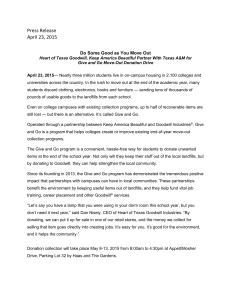


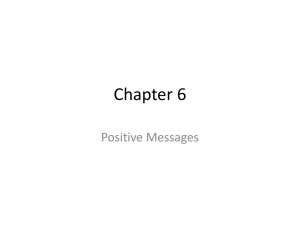
![Quiz chpt 12 13 Fall 2009[1].doc](http://s3.studylib.net/store/data/008065145_1-9341d7c32393454ecadd4d67922dfd05-300x300.png)
